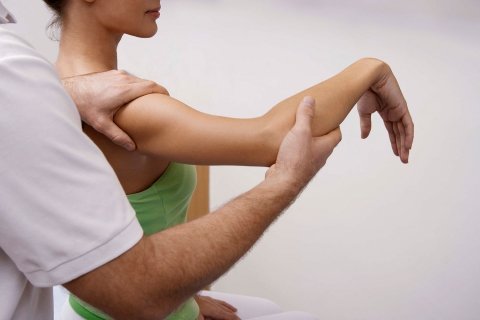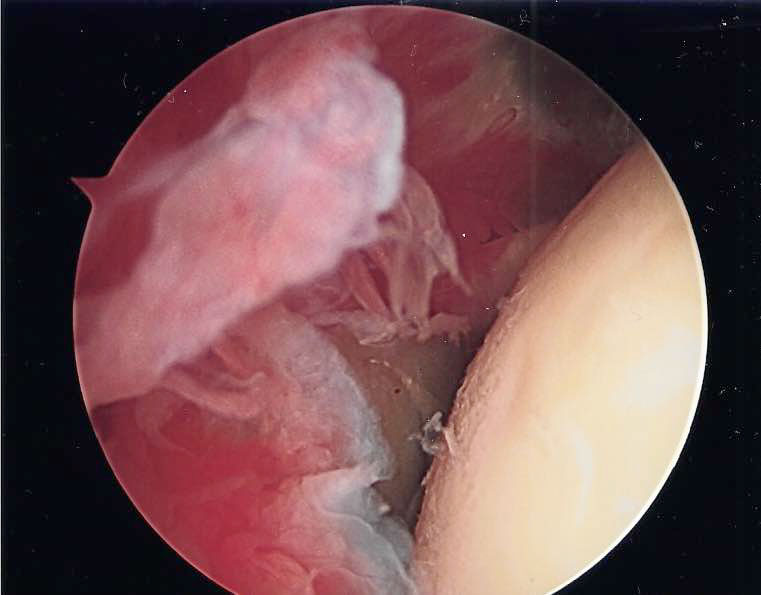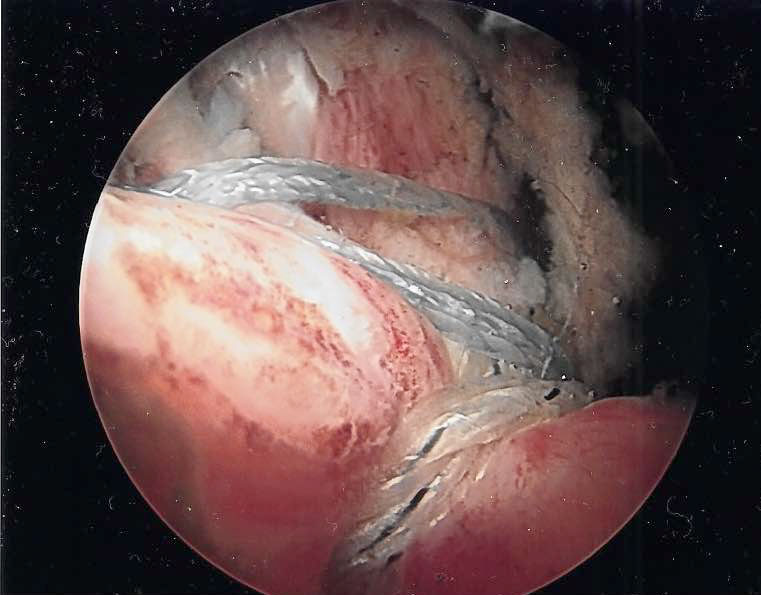
Srini Nageshwar - September 2019
Background
On a trip in May 2019 to visit her sister and her family (nephews, nieces and their children) my wife slipped on a hillock at a public park in Munich, Germany. Her fall was due to wearing shoes with slippery soles. She fell on her right shoulder.
Consequences
She had sharp pain in her shoulder. Physical therapy in Munich brought some relief. In the meantime she came back to the US. While visiting a friend in Benicia at the end of July, she again felt intense pain during the night. This made her get back early to the Bay Area and see her orthopedic doctor. He ordered an MRI which showed a rotator cuff injury. It was obvious that a surgery was necessary, which was planned for the 3rd September.
|
|
This was one of the pictures taken at the start of arthroscopic surgery before repair. I talked to Dr. Mirza (the orthopedic surgeon) about using our neurostimulator product on her for pain medication. He was OK with that. He prescribed 75 Hydrocodone (Vicodin). She only bought 20. I was not very enthusiastic about her using any Vicodin, so I also got her Ibuprofen. I planned to treat her with our DyAnsys neurostimulator and supplement with Ibuprofen, if necessary. |
I actually had our Primary Relief neurostimulator on her during the surgery but could not stimulate continuously since the Primary Relief is designed to stimulate intermittently. We really don't know yet, if we can affect the amount of anesthetic required during surgery. This will be a later test. Dr. Mirza put her under general anesthesia and also did a nerve block.
|
|
This is a picture of the repaired rotator cuff before closure. |
After recovery from surgery I brought her home and in the afternoon I installed a Drug Relief product on her. It was stimulating continuously with a sweep frequency of 1 to 10 Hz and at a stimulation power of 200% of normal. It was set to stimulate for 10 days.
|
|
Detection of stimulation points I looked at the ear maps. I chose the shoulder point and probed the ear until the locator beeped and lit. It only beeps and lights when it gets close to a nerve. I wanted to stimulate the vagus nerve so I probed at the ear close to the ear canal. I found another point that buzzed and lit. I then looked for something close to point zero and while probing found another point that lit up. I was able to find active points to stimulate. |
Dr. Mirza had applied a nerve block, which was active until a maximum of 72 hours. Therefore no pain medication was needed, not even Ibuprofen. We were waiting for the nerve block to subside, so we could be certain that our neurostimulator was doing its job.
The 3 days went by and she was reporting a pain level of 1 (out of a maximum of 10). We were cautiously optimistic that our neurostimulator was very effective. Meanwhile it has been 15 days and I have the third device on her. She has not taken any Ibuprofen nor any of the 20 Hydrocodones, which we will return to the pharmacy.
In talking to the therapists who have been providing home health care to her, I found that the first two weeks are normally sheer hell for the patient. The pain is extreme and that is why people end up having to take Opioids. We were told that it would take up to 6 months before such patients can function normally and there is accompanying pain.
She has been in great spirits since the 2nd day and has been walking around the house helping in the kitchen and has been doing everything she can using one hand. Even loading and unloading the dishwasher! We were told that it would be difficult for her to sleep on a bed. We invested in a recliner as we were advised to do. Well, she has been sleeping through most of the night in her bed, while supporting the affected arm on a little soft pillow!
The physical and occupational therapists visiting her are amazed! They have never seen patients not have any severe pain after shoulder surgery.




